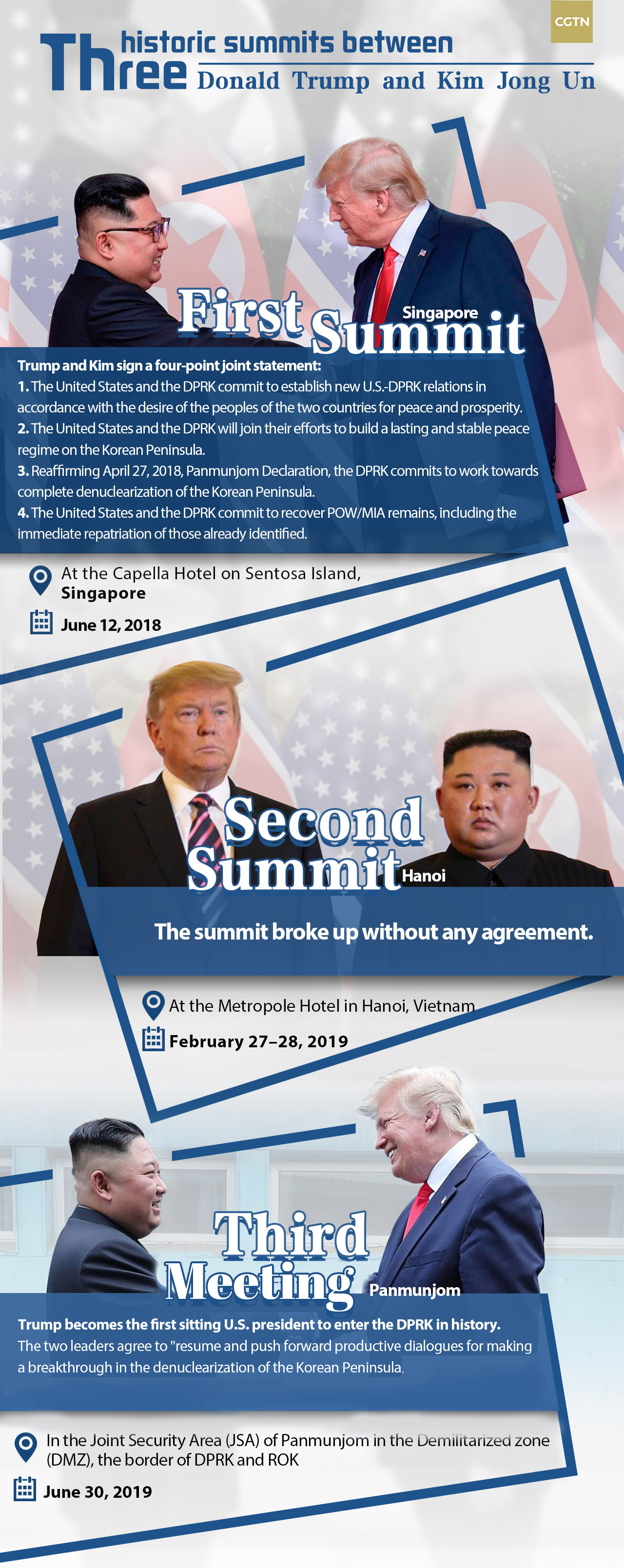Almost 100 days after the June meeting at the demilitarized zone (DMZ) between the U.S. president and the Democratic People's Republic of Korea (DPRK)'s top leader, new progress has been made, along with a new round of possible deadlock.
The two sides restarted their long-delayed working level talks on Saturday but failed to reach a consensus even on the evaluation of the meeting's result, which the DPRK said had "broke down" while the U.S. claimed was "creative and good."
Past 100 days: Ready for dialogue/confrontation
DPRK's Foreign Minister Ri Yong Ho said in August that Pyongyang was "ready for dialogue or confrontation." This attitude well explained all developments on the Korean Peninsula denuclearization during the past 100 days after June.
The DPRK's nine weapons tests since the DMZ meeting have shown a "grave statement" to hostile forces and the "most fearful dagger" for its enemies according to the country's official newspaper about its latest test-firing of a submarine-launched ballistic missile (SLBM).
The tricky thing is that DPRK's willingness for talks is often accompanied by these "unfriendly" signals. Kim, in a letter sent to the U.S. president in the third week of August, spoke of his "willingness" for a third summit and extended an invitation for Trump to visit Pyongyang, the JoongAng Ilbo newspaper reported, citing an unidentified source.
On the U.S. side, the attitude is similarly ambiguous.
Trump has played down the DPRK's previous weapons tests involving short-range projectiles, saying Kim did not break his promise not to test nuclear weapons or long-range missiles.
However, U.S. Secretary of State Mike Pompeo's provocative remarks on different occasions have angered the DPRK and made the future for talks more difficult.
"We recognized that North Korea's (DPRK's) rogue behavior could not be ignored," he said while speaking at the American Legion National Convention in the state of Indiana in August.
Under such tentative conditions, what lies ahead: Dialogue or confrontation?
"The step toward DPRK-U.S. working-level negotiations to prepare for a third DPRK-U.S. summit is getting quicker," Republic of Korea (ROK) President Moon Jae-in said at the 74th UN General Assembly, stressing the importance of "wisdom, determination and bold action not to miss the timing."
Trying to comfort an enthusiastic Moon, Trump gave another unclear answers when briefing reporters at the UNGA after saying that he would want to know DPRK's position in the run-up to a third summit with Kim before agreeing to it.
"The relationships have been very good ... We want to see if we can do something. If we can, that'll be great. And if we can't, that's fine, we'll see what happens," said Trump.
Though the attitudes from relevant parties seem confusing, as always, there are still a list of possibilities to be expected in the near future:
1. U.S.' alternative plans for stalled nuclear talks within two weeks as the U.S. State Department said in Sweden;
2. Another round of working-level talks between the U.S. and the DPRK;
3. The fourth meeting between Trump and Kim, if working-level talks go well;
4. Preparation for an international peace zone at the DMZ as Moon proposed;
5. Dialogue between Seoul and Pyongyang as Moon pledged to bring unification to the Korean Peninsula by 2045;
6. A surprising informal meeting between Trump and Kim as they did 100 days ago, considering that Trump is keen to tout his DPRK policy as a success ahead of his 2020 reelection bid;
7. Three-year suspension of United Nations sanctions against the DPRK on textile and coal exports to move forward on dismantling its nuclear program, reported by VOX;
8. DPRK's weapons tests continue as talks stall, but Trump and Kim exchange letters from time to time.
